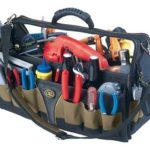I often hear therapists mention their professional “tool box” and the need to access a variety of techniques in client sessions.  A quick Google search showed numerous books that offer “tools” and an assortment of implements for busy therapists; computer/smartphone/tablet applications claim to support therapists’ work with clients, and a plethora of workshops teaching “tools” for therapists to use such as EMDR, EFT, DBT, Reiki, mindfulness, hypnotherapy, somatic focusing, guided meditation, couples relational counseling, and more. Therapists are required to keep abreast of trends, theories, research and application.
A quick Google search showed numerous books that offer “tools” and an assortment of implements for busy therapists; computer/smartphone/tablet applications claim to support therapists’ work with clients, and a plethora of workshops teaching “tools” for therapists to use such as EMDR, EFT, DBT, Reiki, mindfulness, hypnotherapy, somatic focusing, guided meditation, couples relational counseling, and more. Therapists are required to keep abreast of trends, theories, research and application.
Talking with Michael Heller, PhD, author of Body Psychotherapy: History, Concepts, and Methods, however, I learned an important distinction between what we reference as “a therapist’s tool box” and what Dr. Heller calls “a chest of drawers.”
According to Dr. Heller, Gerda Boyesen taught that a therapist must have a tool box filled with a variety of techniques. Each tool has its function and purpose. This concept appears to have carried forward in traditional psychotherapy.
Pierre Janet, a French psychologist and neurologist who founded psychological analysis in 1893, described psychotherapy as “a repertoire of all kinds of therapeutic methods, physical as well as moral, which can be applied to illnesses that can be physical as well as moral. . . In one word, psychotherapy is an application of the science of psychology to treat illnesses.” (Pierre Janet, 1923, La médecine psychologique, III, II, p.152. Approximate translation).
Dr. Heller illustrated Janet’s philosophy with a chest of drawers that is used to contain one’s varied repertoire of psychiatric and psychotherapeutic interventions. The chest of drawer’s metaphor comes from the day when mental illness was mostly a physical illness cured through baths, neurology, massage, etc. One treated simple reflexes, complex reflexes, sensory-motor automatic reactions, automatic ways of thinking (Janet’s thesis), etc. One went from bottom up, from simple spinal reflexes to cerebral automatic reactions (hence the chest of drawers metaphor). Only gradually psychology (hypnosis, increasing moral strength, rendering a split mind whole again, etc.) was introduced as a sort of top drawer.
Beyond the literal difference in meaning between a tool box and a chest of drawers, I noted an important difference in perception: the application of various techniques versus the awareness of scientific understandings of mind, body, and spirit—akin to the new wave of neurological studies that support the work many body oriented psychotherapists have trusted all along.
In this representation, then, for me, it’s not simply about skills a therapist learns and applies. It’s more about understanding the complexity of the human body in relationship with itself and others. It’s being aware of and in tune with the relational components between the therapist and client—heart-to-heart resonance and mind-to-mind understanding—and how one interacts, what one draws upon in the moment to make meaning of the experience and support the client as she comes into her own awakening and healing.







